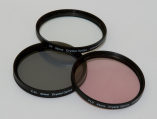Martinique
Caribbean SeaLevel of surfing
Beginner
Quality of surf
Good
Call code
596
Net code
fr
Area
1128
Coastline
225 km
Climate
Tropical, North East Trades
Hazards
Cyclones
Best Months
June - December
Population
401000
Currency
Euro: euros per US dollar - 0.7345 (2007)
Time Zone
(UTC-4)
Special Requirements
Limited Surfing Supplies Available
surfing

Plugwash: Coconut Palm, Martinique; 2005
The Caribbean, she is a harsh mistress. All of the islands in the Greater and Lesser Antilles share at least some aspect towards the North Atlantic and therefore are exposed to any passing fronts that generate of the East American Coast and transit the North Atlantic. These fronts often pass a good way to the north and swell decay can be a problem.
Regular windswell is a constant on the east coast of all of the island groups and hence there is almost always something to keep you occupied and off the rum for a few hours. too much wind can be a bad thing though and onshore days are very common, no matter how early in the morning you manage to peel yourself out of your cot and stumble down to the beach.
The third source of swell in the region are from passing hurricanes. Some of the strongest storm ever recorded on the planet file through here regularly. Technically the season spans June to November with early September being the peak. The ideal scenario is for the hurricane mass to pass clear of any inhabited areas and sit well offshore in the deep Carribean for a few days prior to disipating. The result is typically 3-5 days of western swell that lights up the hidden western points and reefs of the Caribbean. The persistant NE/E trade winds will gently fan these breaks all day long. It is then that some of the rarer points and breaks of Martinique come to life. Surf exploration doesent get any better than this.
what to pack

Rich Niewiroski Jr.: 62 mm ultra-violet, fluorescent, and polarizing lens filters; April 9, 2007
Make sure you take a good sunscreen (SPF 30+); a good insect repellent will be very useful. Bring on the medicines you are used to take. Comfortable walking shoes, sandals, hat and natural fabrics (such as cotton or linen) clothes will be great. Also take something warm just in case. Don't forget a backpack, sandals and comfortable walking shoes that might be usefull if your planning to travel around.
Better take your medicines with you (esp. anti histamine tablets), as
the brands can be unfamiliar and cost more. By the way, getting medical
insurance would be a good idea.
And take a good protection for your camera from the sand.






